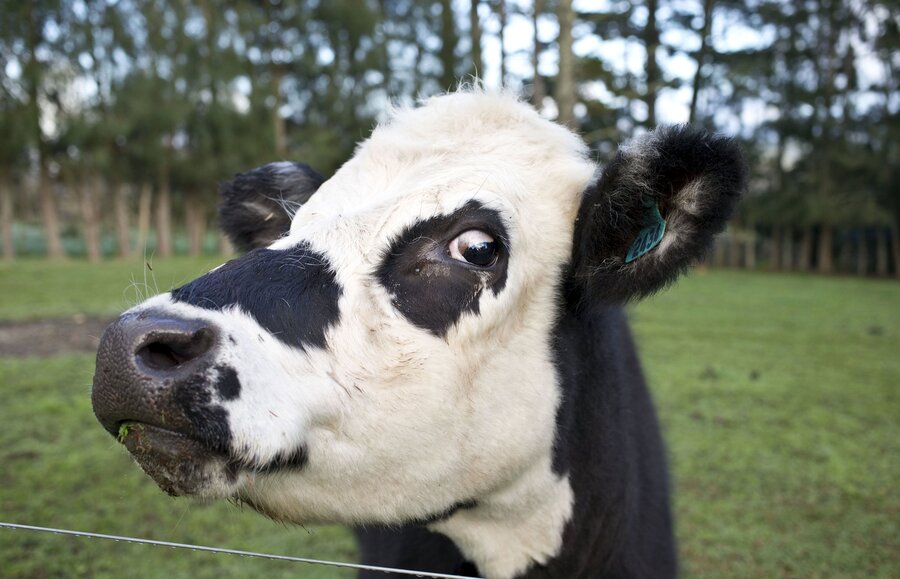How a freak blizzard wrecked Texas's dairy industry
Loading...
Dairy farmers in Texas and New Mexico say consumers can expect a milk shortage, after winter storm Goliath killed more than 30,000 dairy cows last week.
Goliath ripped through the Midwest and Northeast from Dec. 24 to Dec. 29, bringing snow, ice, and wind gusts as high as 80 miles per hour. Heavy winds buried the animals in snow drifts measuring up to 14 feet high, where they suffocated.
“We can’t really put into words what it’s like, other than we’re just doing everything we can to get through it,” New Mexican farmer Cliff Pirtle told KOAT7 Albuquerque. “When the meteorologists first started talking about a blizzard on the eastern plains of New Mexico, I was like, ‘No, this is a desert. That’s not going to happen.’”
But its clear the desert areas of eastern New Mexico and western Texas are not immune to dangerous winter storms.
“Like all agriculture, dairy producers always operate at the mercy of Mother Nature,” Darren Turley, Executive director of the Texas Association of Dairymen, said in a statement. “With Goliath, she dealt a particularly harsh and costly blow to the area’s dairy producers, from the death of thousands of livestock they spend so much time caring for to a loss of milk production over the weekend and in the future.”
Texas dairy farmers are also experiencing an unexpected, yet serious, problem: they don’t have the means or capacity to safely dispose of all the cow carcasses.
“The immediate challenge is how to handle these sudden, massive losses of animals,” Turley said in a statement. “The ordinary methods for disposal cannot handle the volume of deaths we are seeing from this storm.”
In New Mexico, state law requires dairy farmers to compost dead cows on their premises or pay for rendering services, where companies pick up the cow and convert the body into a number of viable byproducts. And if choosing to bury the cows on the premises, farmers must follow a number of guidelines including grave depth and proximity to protect the water table.
But because these methods are unrealistic with the number of cow casualties imposed by Goliath, the Texas Association of Dairymen is currently working with the Texas Commission on Environmental Quality to brainstorm out how 30,000 cows can be disposed of efficiently but safely.
And along with the current mortality rate, dairy producers say we can expect less milk from the cows who survived the storm. Road closures kept truck drivers, who transport the milk from farm to processor, from reaching the farms, wasting hundreds of loads of milk.
The dangerous weather conditions also prevent dairy employees from fulfilling their jobs and milking each cow twice a day. Some cows went two days without being milked.
“When a dairy cow goes that long without being milked, her milk supply starts to dry up,” Turley explains. “That means the dairy cows in this region will give less milk for months to come. Less milk going to market will be felt by consumers, as well as by dairy farmers.”
And while Goliath will have lingering effects on the dairy industry, other food industries in the Southwest are also facing turmoil from unprecedented and unpredictable weather events. Water shortages in New Mexico threaten the chili pepper industry and rising temperatures in Texas invite more invasive species that can harm local agriculture.






